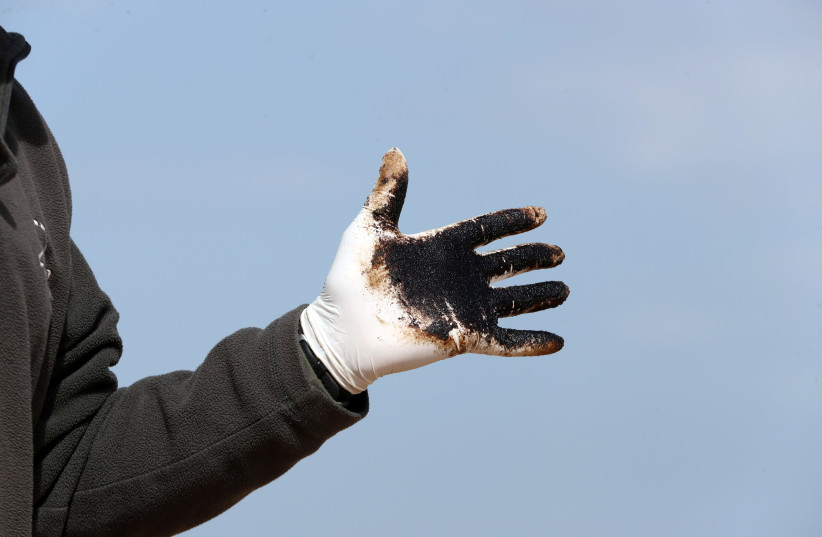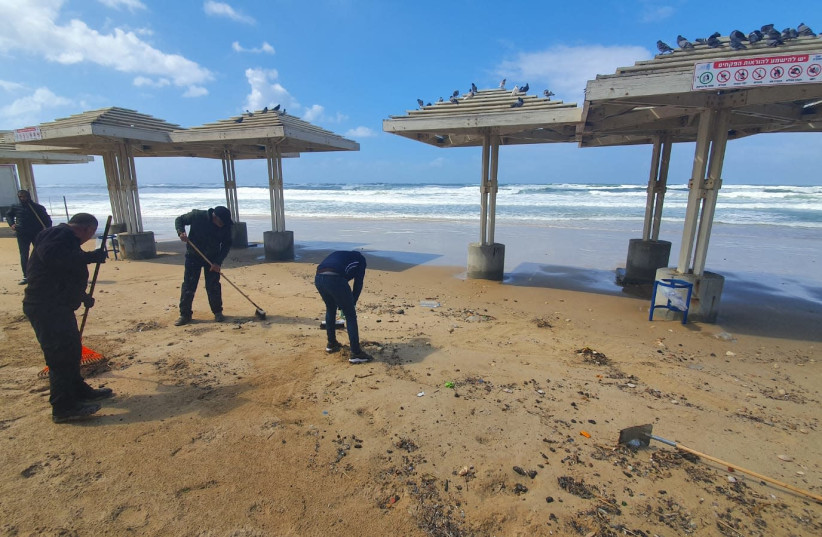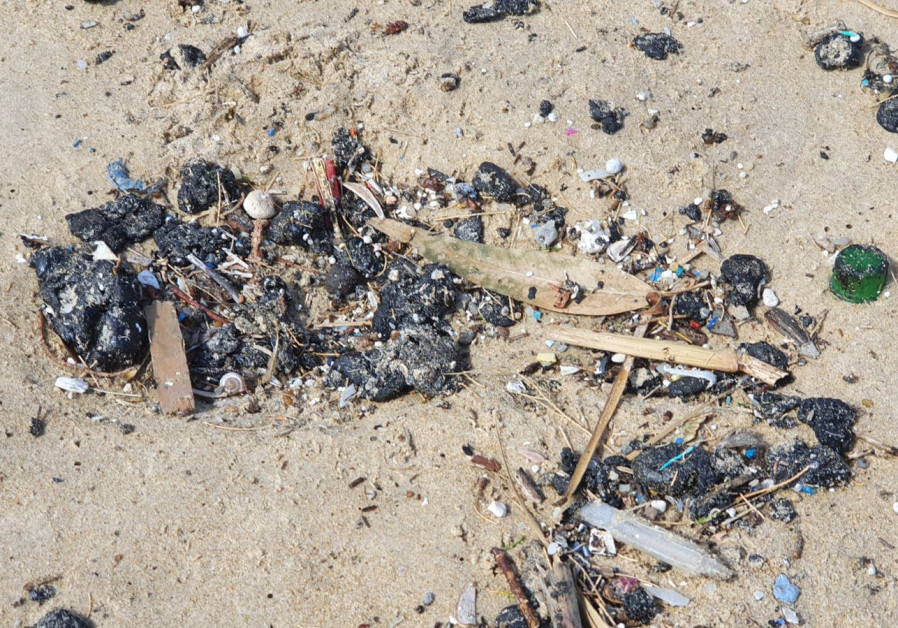The Environmental Protection Ministry has estimated that the amount that washed up is a small amount of what is still in the ocean: 1,200 tons.

As Israel’s shores continue to sustain the damages incurred by the oil spill, more tar has surfaced along the coasts, including the Betzet, Beit Yanai, Tel Dor and Dor Habonim beaches, Walla reported, citing the Nature and Parks Authority on Friday. The oil spill that struck the Mediterranean Sea in February has been dubbed an ecological disaster, leading to the death of many animals, and the washing up of massive quantities of tar — over 70 tons — on Israel’s shores. The Environmental Protection Ministry has estimated that the amount that washed up is a small amount of what is still in the ocean: 1,200 tons.
Tar lumps were sighted as early as February 15, prompting calls for emergency protocols and cleaning crews. While the tar can be cleaned up on smooth sand beaches, it is much harder to clean from rocky beaches, so the tar remains. Hundreds of volunteers have arrived at the 160 km stretches of the Israeli coastline that has sustained the tar pollution to clean it up, including IDF soldiers with disabilities.
The beach pollution “is one of the most dire we’ve ever seen in Israel,” according to Nature and Parks Authority Director-General Shaul Goldstein. The texture of the tar seems to be from an oil or gas spill passing along Israel’s shores. This interactive map shows how severe the tar spills are in different parts of the coast, in a traffic light system, red signifying beaches that have not been cleaned up at all, and green marking light pollution levels. Environmental Protection Minister Gila Gamliel has pointed the finger at Iran, calling the intentional spill “eco-terrorism.” Her claims were later backed up by Lloy’d List, a leading international shipping journal.
Rossella Tercatin, Idan Zonshine and Jerusalem Post Staff contributed to this report.
Storm washes up additional tar residue to Israel’s coastline – Jerusalem Post
The Environmental Protection Ministry noted that efforts were being made to clean up the affected beaches and that additional updates will come in as the storm weakens.

Tar washed up to Dado Beach at Haifa, Friday, March 12, 2021. (photo credit: FARED ARZUAN / ENVIRONMENTAL PROTECTION MINISTRY)
Following Thursday night’s storm, additional tar residue has been washed up to several beaches on Israel’s coastline. The Environmental Protection Ministry announced Friday that the stormy weather had caused winds and waves in the ocean to drift flakes and larger lumps of tar, still contaminating the Mediterranean sea following the unprecedent oil spill that occurred a few weeks ago.
“Inspectors from the maritime unit of the the Environmental Protection Ministry found large amounts of tar lumps at the Neve Yam Beach at Hof HaCarmel Regional Council,” a statement by the ministry read. Other reports have indicated changing amounts of tar residue washing up to beaches in Haifa, Kiryat Yam and the Mateh Asher Regional Council.
Tar washed up to Dado Beach at Haifa, Friday, March 12, 2021. (Credit: Fared Arzuan / Environmental Protection Ministry)
The ministry noted that efforts were being made to clean up the affected beaches and that additional updates will come in as the storm weakens. In mid-February, Israel found itself in the middle of an unprecedented ecological disaster, as hundreds of tons of tar were pushed ashore due to inclement weather, covering approximately 160 km. out of the 190 km. of Israel’s Mediterranean coast.The response to this disaster has been almost as unprecedented as the disaster itself, with thousands of volunteers, including senior European diplomats, stepping up to clean Israel’s once white beaches.Various reports have indicated that the oil spill was done as a deliberate action by Iran, which Environmental Protection Minister Gila Gamliel has referred to as “eco-terrorism.”
https://www.jpost.com/israel-news/storm-washes-up-additional-tar-residue-to-israels-coastline-661819

